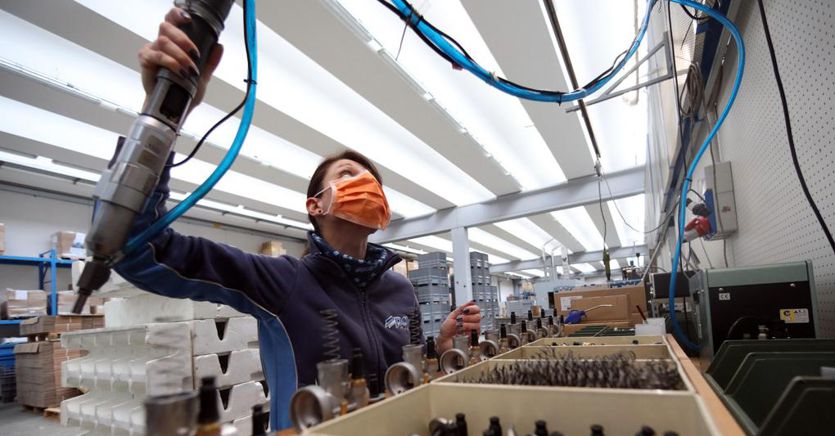The causes of increased resilience
To justify the excellent stability of Italian manufacturing, there is also another factor, namely the reduced exposure of Italian manufacturing companies to the bottlenecks that are afflicting global value chains: only 15.4% of Italian companies. in fact, they complain about supply constraints in production due to the lack of materials or the insufficiency of plants, against an EU average of 44.3% and 78% of the companies surveyed in Germany. Alongside this, explains Csc, Italian manufacturing has certainly benefited from the massive use of loans guaranteed by the state. Not surprisingly, the new debt contracted by companies in 2020 amounted to 4.1 points in turnover compared to 0.3 in 2019, but it avoided closures and heavy repercussions on employment.
Who goes up and who goes down among the sectors of national production
Among the sectors, as specific Italians, we note the good response of all sectors related to construction (wood + 9.5%, metallurgy + 8.2%, non-metallic minerals + 7.8%, metal products + 7% ), while pharmaceuticals are in contrast (-7.2%). And some global dynamics are confirmed: electrical equipment (+ 8.9%), electronic devices (+ 5%), clothing (-38.7%), leather goods (-15.3%), automotive (-6.4%) ) and other means of transport (-11.5%).
The increase in backshoring
Then there is a further element that certifies the good state of health of the national manufacturing. And it is the increase in the so-called “backshoring”, the return of production to the country of origin: according to the CsC report which investigated this aspect together with the RE4IT research group, among the companies that had existing foreign supply relationships, the 23% of the 75% of companies that had opted for relocation have already started, in the last five years, full or partial backshoring processes, and of these, 2% have chosen a complete supply backshoring. For what reasons? The answers are very clear: in the first place there is the availability of suitable suppliers in Italy, followed by the possibility of reducing delivery times and the increase in supply costs from abroad. A sign that outsourcing has not, in any case, led to the disappearance of national supply networks and that they have in any case remained efficient from an operational point of view.
Worldwide manufacturing
So far the resilience of Italian manufacturing which has moved, as mentioned, with greater speed than what has happened outside national borders. Globally, in fact, as the director of CsC Fontana also explained, manufacturing has indeed recovered after the collapse of the first months of 2020, but, after this rebound, growth was substantially interrupted in 2021 both in advanced economies than in emerging countries. And this dynamic, underlined Fontana, spared no one, including China, which grew by a modest 1.6 percent until July 2021.
The global slowdown but China strengthens its leadership
But what are the causes that caused this trend? Fontana cited the effects of the lockdown measures taken in emerging countries, but also the energy crisis in China which forced the forced suspension of many industrial activities, with cascading effects on supplies throughout the rest of the world. Nonetheless, China remains firmly the leading global manufacturing producer on a global scale with a growth of two percentage points in its market share (from 28.6% in 2019 to 30.1% in 2020), while the gap between Usa (16.6%) with fourteen points of difference. As for Italy, our country retains seventh place worldwide.
–


